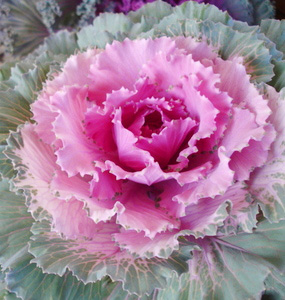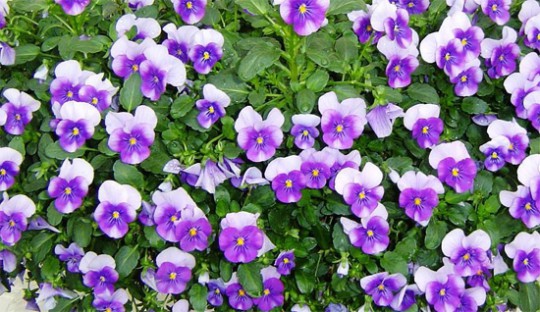Weekend Gardening: Colorful Bedding Plants Can Brighten A Winter Day
October 27, 2013
Decreasing day length is a signal to start preparing for winter. Soon, deciduous shrubs will drop their leaves and the landscape will appear stark and less impressive. To keep the gloomy days of winter at bay, add cool season bedding plants to the landscape.
 Bedding plants are those that are commonly used in residential and commercial landscapes to provide color and interest. No other group of plants can so quickly and economically create a colorful landscape.
Bedding plants are those that are commonly used in residential and commercial landscapes to provide color and interest. No other group of plants can so quickly and economically create a colorful landscape.
Most bedding plants are annuals. These short-lived plants grow from seed, bloom and die within one growing season. The transient nature of annuals means that at the end of their season when they are no longer attractive, annuals are removed and replaced with new plantings.
Many flowering plants prefer a very specific season; therefore, bedding plants are classified into two groups based on the temperatures they prefer. Cool season bedding plants do best in the cold to mild temperatures of October through early May and generally tolerate typical winter freezes without protection.
According to a University of Florida/IFAS publication, bedding plants that can be added to the North Florida landscape now include alyssum, baby’s breath, calendula, carnation, dianthus, dusty miller, foxglove, hollyhock, ornamental cabbage and kale, pansy, petunia, snapdragons and violas.
 Most annual bedding plants prefer to be in a sunny location. Prepare the planting beds several weeks before planting. First, remove any weeds or other unwanted plants from the bed. Next, turn the soil to a depth of about eight inches. Spread a two- to four-inch layer of compost, rotted leaves, aged manure, composted finely ground pine bark or peat moss over the bed, and then evenly sprinkle a light application of an all purpose fertilizer. Thoroughly blend the organic matter and fertilizer into the bed, rake smooth and you’re ready to plant.
Most annual bedding plants prefer to be in a sunny location. Prepare the planting beds several weeks before planting. First, remove any weeds or other unwanted plants from the bed. Next, turn the soil to a depth of about eight inches. Spread a two- to four-inch layer of compost, rotted leaves, aged manure, composted finely ground pine bark or peat moss over the bed, and then evenly sprinkle a light application of an all purpose fertilizer. Thoroughly blend the organic matter and fertilizer into the bed, rake smooth and you’re ready to plant.
Gardeners are accustomed to (and even demand) that bedding plants be in bloom when they are purchased. Some cool season bedding plants, however, will provide far superior results if they are purchased when young and before the colorful display begins.
Bedding plants are typically planted to make a dramatic statement. To accomplish that, place multiple plants of the same kind in a bed. Bedding plants generally look best and the beds will fill in better when the rows are staggered. Lay out the first row of plants spaced properly. The second row is laid behind the first row at the appropriate spacing from it, but the plants are placed between the plants of the first row so that they form triangles with those plants.
Flower beds of colorful bedding plants add a lot to the landscape but require a fair amount of maintenance to stay looking their best. Keeping beds well weeded is critical. A two-inch layer of mulch will help considerably in keeping weeds from growing, and using preemergence herbicides (weed preventers) may help in some situations. However, always plan on having to do some hand weeding.
Theresa Friday is the Residential Horticulture Extension Agent for Santa Rosa County.




Comments